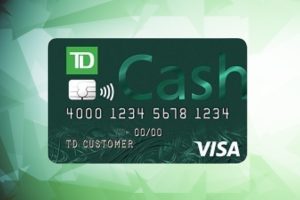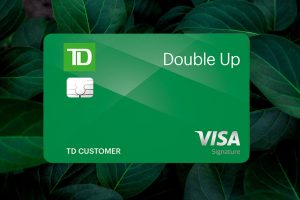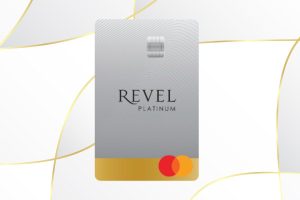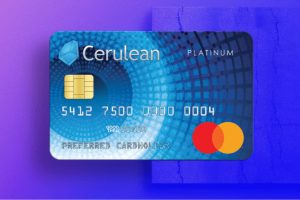To avoid financial burdens from credit cards, it’s key to not pay interest. By paying off your credit cards on time, you stop debt from growing. This is because high-interest rates can make your balance go up if you don’t pay off the full amount each month.
Smart financial planning helps you save money and stick to your budget. It means keeping an eye on your spending and being careful with how much you spend. This way, you can avoid getting into debt.
By paying your credit card bills in full every month, you manage your credit well and avoid extra fees. This means you won’t pay interest, giving you peace of mind. It also helps keep your financial health strong.
Key Takeaways
- U.S. households with revolving credit card debt pay an average of just over $1,000 in interest per year.
- Credit card interest rates are at 22.16% as of May 2023, up from 16.17% in early 2022.
- Avoiding interest through disciplined payment practices can help you achieve significant credit card savings.
- Issuing full payments each billing cycle helps in effective credit utilization management.
- Using free budgeting tips and tools like Mint or Goodbudget can aid in managing your spending.
The High Cost of Credit Card Interest
Credit card interest can greatly increase the debt people owe, causing financial stress for many U.S. households. It’s crucial to understand how credit card interest works to improve financial knowledge and lessen the impact of interest charges.
Understanding Credit Card Interest

Credit card interest is the fee for borrowing money from credit card companies. It’s shown as an Annual Percentage Rate (APR), which changes based on your credit score and the card type. For example, the Chase Freedom® card’s APR ranges from 14.99% to 23.74%. The average credit card APR is 15.78%, as reported by the Federal Reserve.
Interest charges add up daily on your balance. Carrying a balance month to month can lead to big interest payments. For instance, a $5,000 balance with a $500 payment incurs $81.92 in interest. But splitting the payment into two $250 parts cuts the interest to $79.87.
The Average Interest Paid by U.S. Households
A study by NerdWallet found that U.S. households with credit card debt pay about $1,155 in interest yearly. Self-employed Americans pay around $1,539 annually. The growing household debt from credit cards can be tough, but there are ways to fight it.
One good way to beat credit card interest is by moving the balance to a 0% APR card for 12 to 18 months. Another strategy is to make more than one payment a month. This lowers your average daily balance and the interest you pay.
Actively reducing interest charges boosts financial knowledge and eases the load of household debt. By using these strategies and understanding credit card debt’s true cost, you can manage your finances better. This leads to a more secure financial future.
| Credit Card Type | APR Range | Annual Interest Paid |
|---|---|---|
| Chase Freedom® | 14.99% – 23.74% | $1,155 (Average U.S. Household) |
| Self-Employed (Various Cards) | 15.78% (Average, Federal Reserve) | $1,539 |
| 0% APR Balance Transfer Cards | 0% (For 12-18 months) | $0 (if balance is paid in full) |
Why Paying Your Credit Card Bill in Full Matters
Paying your credit card bill in full each month is key to avoiding extra interest charges. This way, you make the most of the interest-free period. It also helps lower your financial stress and boosts your credit score. By managing your credit well, you move closer to financial stability.
Benefits of Paying In Full
One big plus of paying your credit card bill in full is avoiding interest charges. This lets you enjoy the grace period fully, which is at least 21 days from your statement date. Plus, it keeps you out of the debt cycle that high interest rates can lead to, saving you more money.
- Enhanced Credit Score: Paying off your balance keeps your credit utilization low, which improves your credit score.
- Zero Interest Charges: Using the interest-free period means no extra interest costs, which saves you money over time.
- Financial Flexibility: You keep better control over your money and avoid the worry of growing debt.
Strategies to Pay Off Every Month
It’s important to have good strategies to pay your credit card bill every month. Here are some tips to help you manage your money well:
- Track Your Spending: Keep an eye on your spending to stay on budget. Many apps and websites can help you track your expenses.
- Set Up Reminders: Set reminders for when payments are due to avoid late fees and extra interest. Most banks and credit card companies offer alerts by email or text.
- Strategic Income Allocation: Set aside part of your income for credit card payments to make sure you have enough to pay off the balance fully.
By managing your credit responsibly and paying off your balance each month, you can enjoy credit cards’ benefits without the high interest costs. Following these strategies will help build a solid financial base.
| Strategy | Key Benefit |
|---|---|
| Track Your Spending | Stay within budget and avoid overspending. |
| Set Up Reminders | Prevent late payments and interest charges. |
| Strategic Income Allocation | Ensure funds are available for full payment. |
Following these methods helps you keep the benefits of the interest-free period and maintain good credit management. This leads to better financial health and stability in the long run.
Consolidate Debt with Balance Transfer Credit Cards
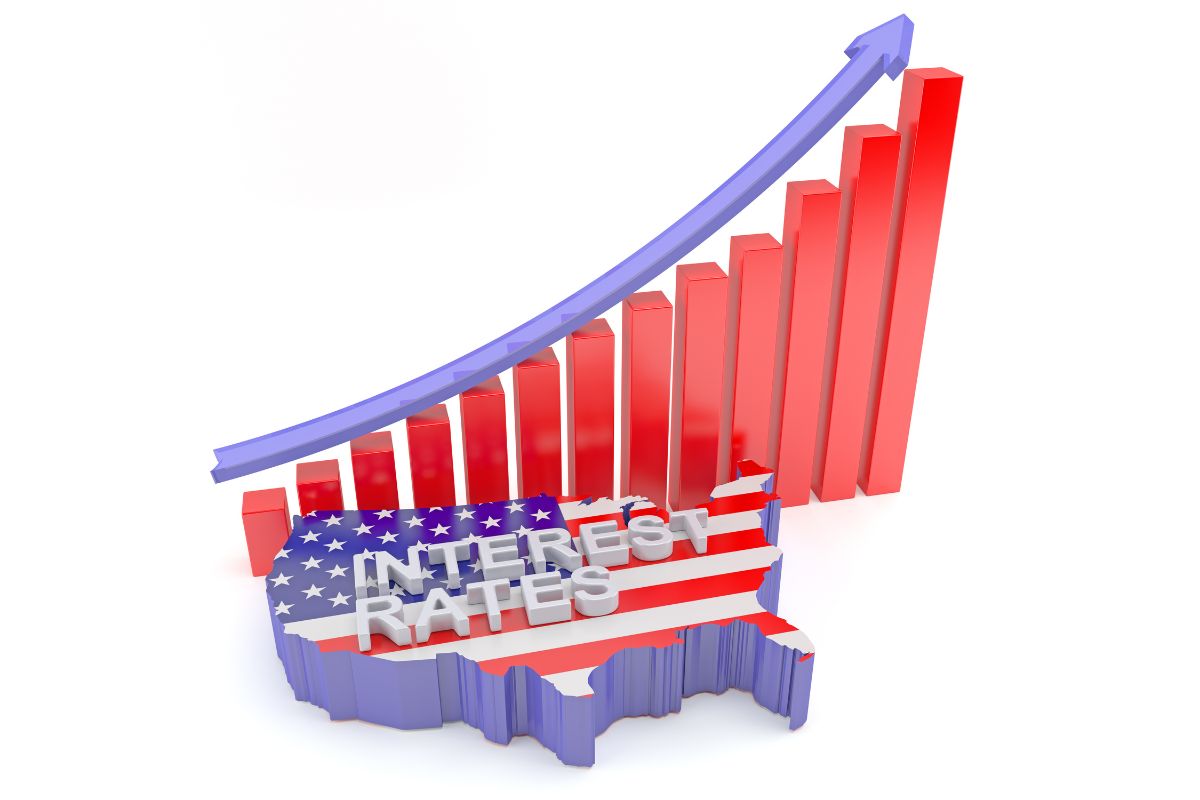
Using balance transfer credit cards is a smart way to consolidate debt, especially if you have high-interest credit card balances. By moving your balances to a card with a lower or 0% APR period, you can save a lot on interest.
How Balance Transfers Work
Balance transfer offers let you move debt from one or more cards to a new card with a 0% introductory APR. This period usually lasts between 12 and 21 months. It gives you a break from interest and helps you pay off debt faster. For example, the Citi® Diamond Preferred® Card offers a 0 percent introductory APR on balance transfers for 21 months with a 5 percent balance transfer fee.
It’s important to start the transfer quickly, as the clock starts right away. During the 0% APR period, focus on paying off as much debt as you can. Set reminders for the end of this period to avoid losing the introductory APR and facing penalties.
Pros and Cons of Balance Transfer Cards
Balance transfer credit cards have both good and bad points. They offer a chance to consolidate debt under better terms and can save you a lot on interest. For instance, the Wells Fargo Reflect® Card gives a 0% intro APR for 21 months on qualifying balance transfers, with a 5 percent transfer fee.
- Pros:
- Chance to pay off debt without interest during the introductory APR period.
- One monthly payment makes managing debt easier.
- Potential to save a lot on interest if you pay off the balance before the promotion ends.
- Cons:
- Balance transfer fees are usually 3% to 5% of the amount transferred.
- You need good to excellent credit to get one of these cards.
- If you don’t pay off the debt before the 0% APR ends, you’ll face higher interest rates.
When picking a balance transfer credit card, think about if you can pay off the debt during the introductory period to save the most and manage your credit well. Using the debt snowball or debt avalanche methods can help you pay off debt fast without extra costs or arrangements.
| Card | Intro APR Period | Balance Transfer Fee |
|---|---|---|
| Citi® Diamond Preferred® | 21 months | 5% |
| Wells Fargo Reflect® | 21 months | 5% |
Be Strategic About Your Purchases
Planning your purchases carefully can help you manage big buys without paying interest right away. With many credit card offers like 0% APR cards, deferred interest, and Buy Now, Pay Later (BNPL) plans, you can use these tools to improve your finance management.
Choosing 0% APR Cards
Credit cards with a 0% APR on new purchases can ease the stress of paying all at once. These deals usually last from six to 21 months, giving you time to pay off your balance without interest. To get these credit card offers, you need a good credit score of 670 or higher. But, it’s key to pay off the balance before the deal ends to avoid extra interest charges.
Deferred Interest Financing Options
Deferred interest financing is a great purchase planning tool, letting you delay payments without interest for a while. But, remember the rules: if you don’t pay the full amount by the end of the deal, you could face high interest charges from the start. Good finance management and on-time payments can help you get the most from these offers.
Buy Now, Pay Later Plans
Buy Now, Pay Later (BNPL) plans let you break down purchases into smaller payments. These plans, offered by top retailers and online shops, can help you manage your money better without paying interest right away. But, watch out for hidden fees and higher interest if you miss payments. Good purchase planning and careful finance management are key to avoiding problems and benefiting from BNPL.
Implementing Debt Repayment Methods

If you want to improve your finances and boost your credit score, it’s key to know how to pay off debt. Two effective ways to do this are the Debt Avalanche and Debt Snowball methods. Each method has its own benefits and can fit different financial needs.
The Debt Avalanche Technique
The Debt Avalanche method targets debts with the highest interest rates first. This is great for saving money on interest over time. First, list your debts and their interest rates. Pay the minimum on all debts, but add extra to the one with the highest rate.
Here’s how to follow the Debt Avalanche:
- List your debts from highest to lowest interest rate.
- Make minimum payments on all debts except the one with the highest interest rate.
- Put extra money towards the debt with the highest interest rate until it’s gone.
- Then, move on to the next highest interest rate debt.
This method can save you a lot on interest and speed up your debt repayment.
The Debt Snowball Technique
The Debt Snowball method focuses on paying off the smallest debts first, no matter the interest rate. This approach gives you quick wins and keeps you motivated. Start by listing your debts from smallest to largest. Pay the minimum on all debts, but add extra to the smallest one.
Here’s the Debt Snowball plan:
- List your debts from smallest to largest balance.
- Pay the minimum on all debts, but add extra to the smallest one.
- After paying off the smallest debt, move on to the next one.
This method creates a snowball effect, helping you get faster results. It can also help improve your credit score and financial health.
Both the Debt Avalanche and Debt Snowball methods provide structured ways to tackle debt. Pick the one that fits your financial situation and stick with it. This can make paying off debt easier and help you secure a better financial future.
Avoid Interest: Making Multiple Payments Each Month
Making several payments in one month is a smart way to lower your credit card debt. This approach helps avoid extra interest and keeps your finances healthy. It’s a key piece of financial advice for managing your money well.
Impact on Average Daily Balance
Credit card interest is based on the average daily balance over the billing cycle. By paying more often, you can lower this balance. This means you pay less interest overall.
- Interest builds up at about 0.0465% daily for a card with a 16.99% APR.
- A $1,000 balance can gain around $14.43 in interest over 31 days if not paid wisely.
- By paying a little each day, you can greatly reduce the interest you owe.
| Payment Frequency | Total Paid | Interest Charged |
|---|---|---|
| Once a Month ($600) | $600 | Higher* |
| Bi-weekly ($300 each) | $600 | Moderate |
| Weekly ($150 each) | $600 | Lowest |
Note: The interest you pay will depend on how much you reduce your balance each day.
Practical Tips for Frequent Payments
It’s easy to make more frequent payments. Here are some tips:
- Align payments with paychecks: Pay off your card every time you get paid. This helps manage your money better and keeps it from sitting unused.
- Use windfalls wisely: Put extra money like tax refunds or gifts towards your credit card debt.
- Set up automated payments: Automate your payments to never miss a due date. This avoids late fees (up to $40) and helps keep your credit score healthy.
- Monitor your balance regularly: Checking your balance often gives you a sense of progress. It motivates you to keep working on paying off debt.
- Utilize 0% APR cards: If you can, use cards with 0% intro APR for new purchases. This way, you avoid paying interest right away.
Using these smart payment habits has two big benefits. It helps lower your credit card debt and builds a disciplined financial life. These strategies can change how you handle credit, leading to less interest and a better credit score.
Tapping Into Savings to Pay Down Debt
Using your savings to pay off high-interest credit card debt can be a smart move. It’s key to know when and how to use your emergency funds. This can greatly improve your financial stability.
Using Emergency Savings Wisely
Experts say you should keep an emergency fund for three to six months of living costs. If you earn $5,000 a month, aim for at least $15,000 in savings. Once you have enough for emergencies, use extra savings to pay off high-interest credit card debt. This way, you’re getting a ‘return’ on your savings that’s often higher than a standard savings account.
Long-term Benefits of Reducing Debt
Pay off high-interest debt like credit cards with an 18% APR before investing in things like retirement savings that might earn 6% a year. This approach can save you a lot of money in interest. It also helps avoid late fees, protects your credit score, and prevents foreclosure.
Try debt repayment strategies like the debt avalanche or debt snowball methods. The debt avalanche pays off debts with the highest interest first, saving you money on interest. The debt snowball method starts with the smallest debts, giving you quick wins and motivation.
To become debt-free, you might need to adjust your budget, cut unnecessary spending, and look for lower-interest options. By using your savings wisely and focusing on high-interest debt, you’re on your way to long-term financial stability.
| Scenario | Action | Financial Impact |
|---|---|---|
| Emergency Fund Recommended Size | Three to six months’ worth of essential living expenses | Increases financial security |
| Paying down high-interest debt | Use additional savings beyond emergency funds | Earns a return equal to avoided interest rate |
| Avoiding interest on debts | Debt avalanche vs. debt snowball methods | Reduces total interest paid over time |
Considering Personal Loans

If you’re dealing with high credit card interest rates and finding it hard to manage multiple payments, personal loans could be a good option. We’ll look into the benefits and key points to consider about personal loans.
Benefits of Personal Loans Over Credit Card Debt
Personal loans offer many advantages, especially for credit card debt consolidation. They usually have fixed interest rates, unlike credit cards which can have rates around 22% APR. The average rate for personal loans is about 13% APR, making them cheaper for many people.
By moving credit card debt to a personal loan, you could save about $1,619 in interest. Personal loans also make your monthly payments easier to handle by combining them into one predictable amount.
| Aspect | Credit Cards | Personal Loans |
|---|---|---|
| Average Interest Rate | 22% APR | 13% APR |
| Introductory APR | 0% for 12-21 months | Up to 21 months for balance transfers |
| Monthly Payments | Varied | Fixed |
| Loan Amount | Varies | $5,000 to $100,000 |
| Fees | Balance transfer fee (3% or $5) | Origination, late, insufficient funds fees |
| Term Lengths | Varies by card | 24 to 144 months |
Factors to Consider Before Applying
When looking into personal loans, there are several key factors to think about. Eligibility can change a lot between lenders. For instance, LightStream offers APRs from 7.49% to 25.49%, while Discover personal loans range from 7.99% to 24.99% APR.
Look at the loan terms, like how long the loan lasts and how much you can borrow. Personal loans can be from $5,000 to $100,000, lasting 24 to 144 months. Also, be aware of fees like origination, late, and insufficient funds fees. Think about these carefully to see if a personal loan is the best choice for you.
Payment Strategies to Avoid Credit Card Interest
Understanding and managing your promotional rates can greatly reduce the interest you pay on your credit cards. Promotional rates, like 0% APR offers, let you make purchases or consolidate debt without interest for a while. With the average credit card interest rate at 20.75%, using these offers can save you a lot of money.
Understanding Promotional Rates
Promotional rates are special deals to attract new customers or get existing ones to use their cards more. These deals offer 0% APR on new purchases or balance transfers for nine to 21 months. You won’t pay interest on the balance if you pay it off before the deal ends.
- 0% APR Offers: These deals let you buy things or transfer balances without paying interest for a set time, usually nine to 21 months.
- Balance Transfer Cards: Like 0% APR offers, these cards give an introductory 0% APR on balances moved from other cards for up to 21 months.
- Note: Always pay off the balance before the deal ends to avoid high-interest rates later.
After the deal ends, the standard variable APR will apply to any balance left, and this rate can change with the prime rate.
Choosing the Right Credit Card
Your credit card selection greatly affects the interest you pay over time. Doing a credit card comparison helps you see which cards are best based on their rates, rewards, and fees. This way, you can choose wisely.
- Interest Rates: Look at the standard and penalty APRs of different cards to understand the costs if you carry a balance.
- Reward Structures: Find cards that offer rewards or cashback that fit your spending and can help reduce costs.
- Fees: Check any annual fees, balance transfer fees, and foreign transaction fees as these can add up.
Being smart with your credit card selection and using interest rate promotions can prevent high interest charges. This saves you money and keeps your finances healthier.
Remember, paying only the minimum can mean most of your payment goes to interest. Always try to pay your balance in full each month to use the grace period fully.
Conclusion
Smart financial planning can help you avoid big credit card interest charges. By paying off your balances fully and on time, you can ease your financial burden. For example, U.S. households pay about $1,155 a year in interest on credit cards. But, with smart strategies, you can cut or even eliminate these costs.
Using balance transfer offers with 0% APR for 12 to 18 months can help. Or, making more than one payment each month can also lower your interest. For instance, paying $250 twice on a $5,000 balance saves more interest than paying $500 once.
Targeting high-interest balances with extra payments and sticking to a budget can also help. These steps can lead to full debt payoff.
Turning your credit cards into tools for financial success requires careful planning and informed choices. Using the grace period wisely and avoiding cash advances can make a big difference. By consistently using smart financial planning and optimizing your credit card use, you can live without the burden of credit card interest. This approach will improve your financial health.



